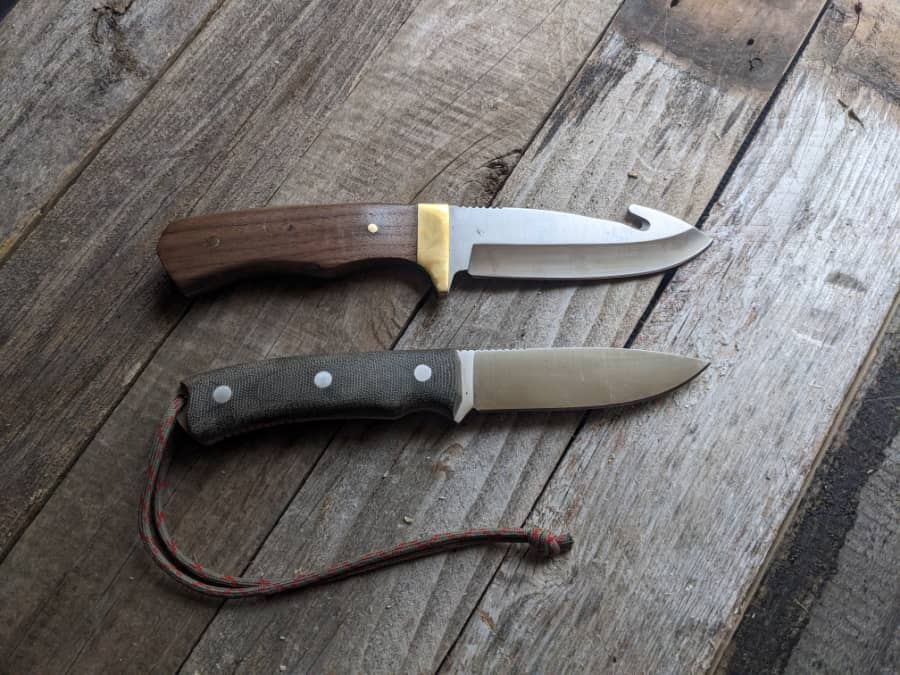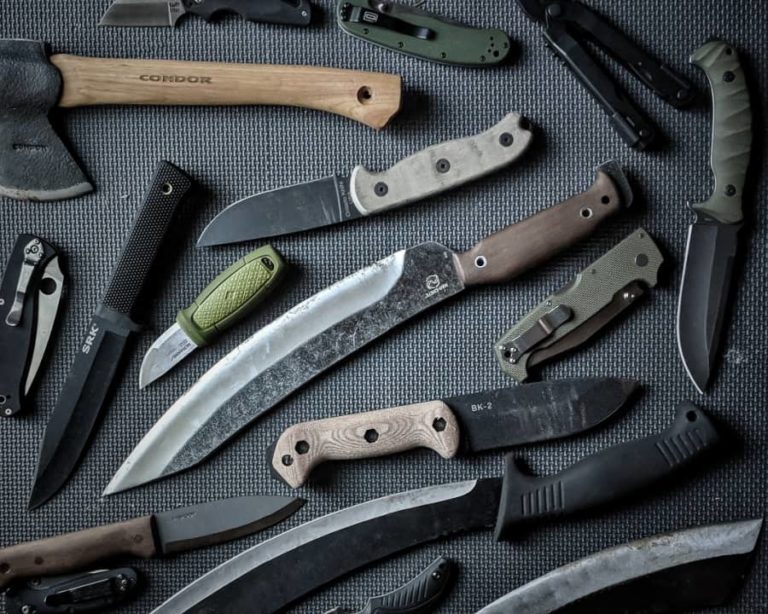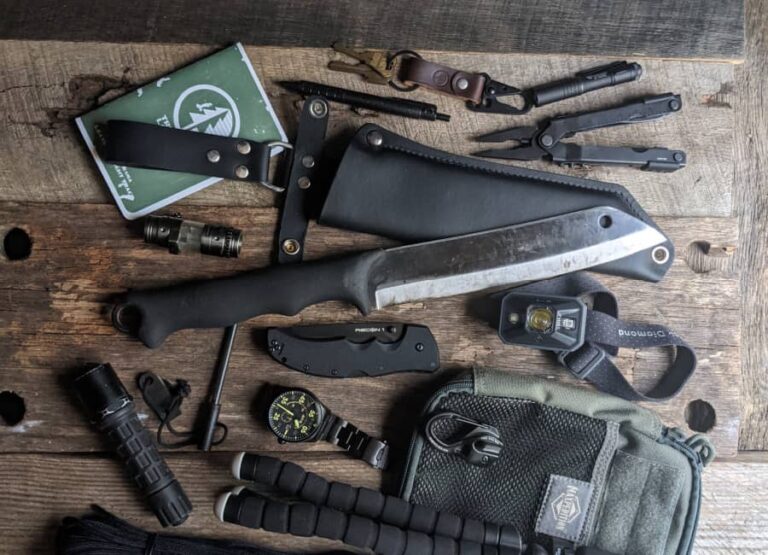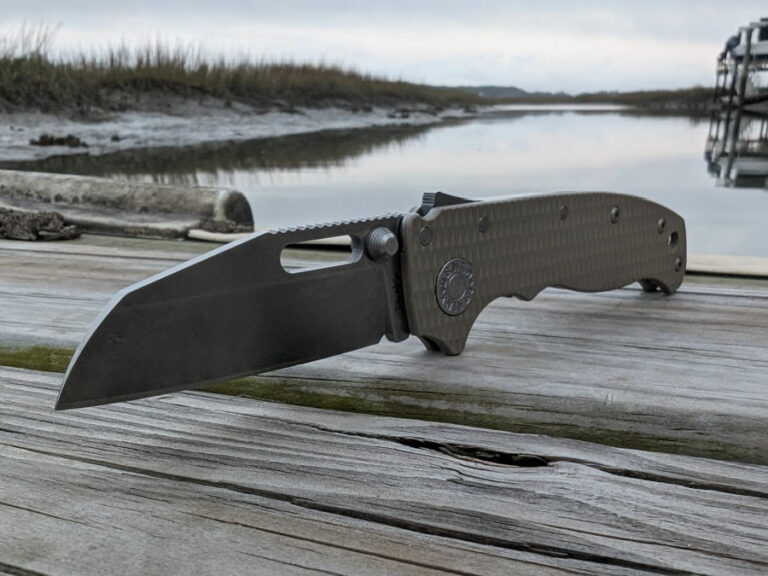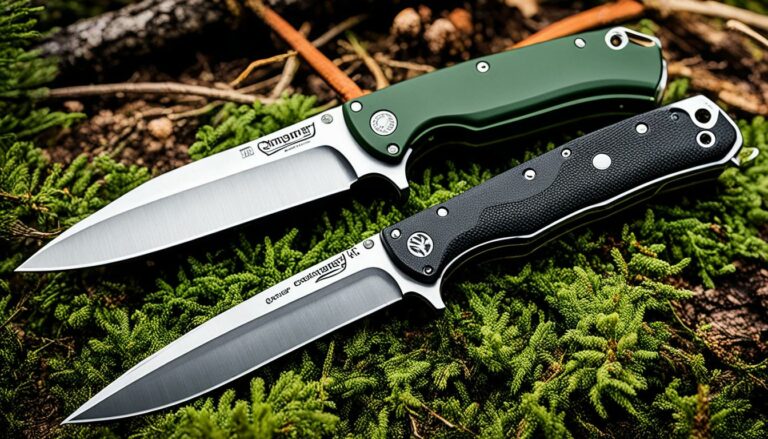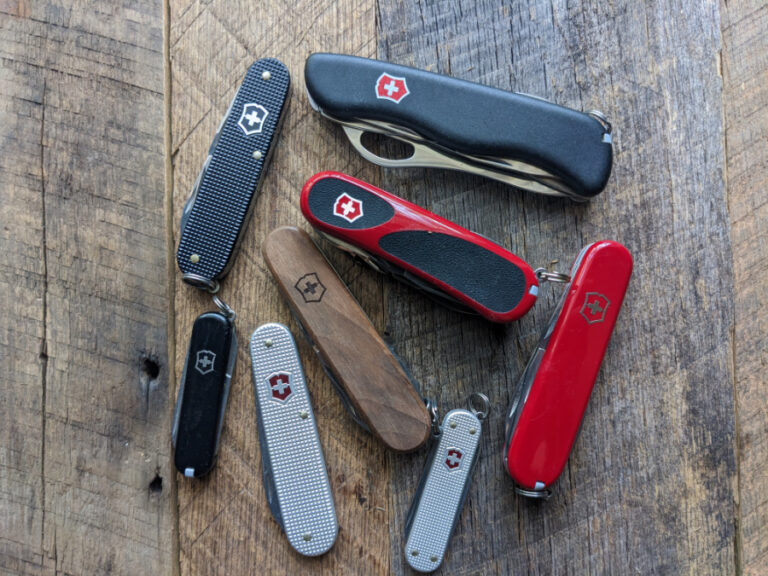What is the Difference Between a Hunting Knife and a Bushcraft Knife?
Quick Answer: A hunting knife is primarily geared for processing game and butchering animals while a bushcraft knife is more focused on traditional woodsman skills such as fire starting, making shelter, and basic wood carving.
A Knife Is Your Trusted Companion
Knives have been an essential tool for humans throughout history, playing a crucial role in various outdoor activities. From hunting and fishing to camping and survival situations, a reliable knife can be the difference between success and struggle.
When venturing into the great outdoors, having a trustworthy knife by your side is as vital as a compass or a fire starter. Knives are not just utensils for slicing through meat or rope; they are multifunctional tools that aid in tasks such as food preparation, shelter building, wood processing, and even self-defense.
While there may be some overlap between hunting knives and bushcraft knives due to their shared use in wilderness environments, they are purpose-built for specific tasks.
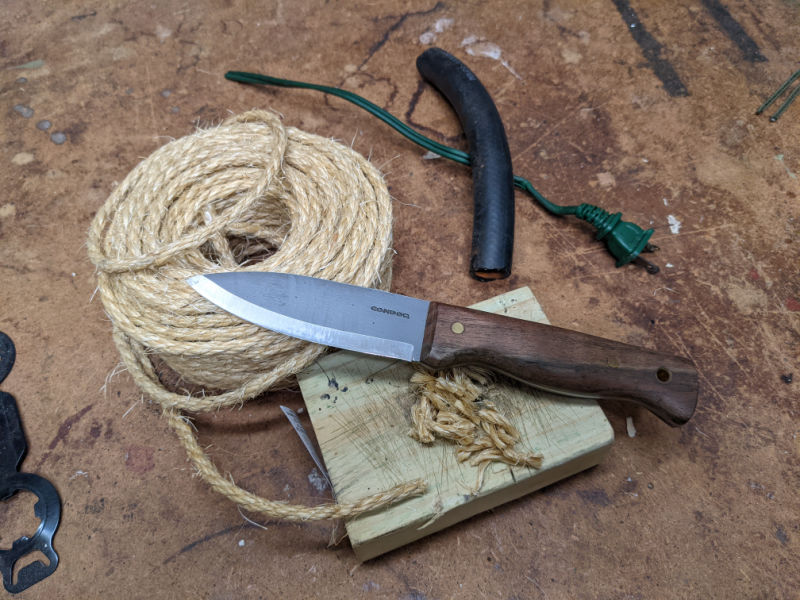
Main Differences Between The Knives:
- Purpose of Use:
- Hunting Knife: Primarily used for processing game, such as skinning and gutting.
- Bushcraft Knife: Designed for various wilderness tasks, including carving, chopping, and batoning.
- Blade Shape:
- Hunting Knife: Often features a narrower and more curved blade to assist in precise cuts.
- Bushcraft Knife: Typically has a straighter, robust blade suitable for a wide range of woodwork tasks.
- Blade Thickness:
- Hunting Knife: Generally has a thinner blade to allow for detailed work such as deboning.
- Bushcraft Knife: Tends to have a thicker blade to withstand tougher tasks like splitting wood.
- Tang Construction:
- Hunting Knife: Can have either full or partial tang, depending on the design.
- Bushcraft Knife: Usually features a full tang for greater strength and durability.
- Edge Grind:
- Hunting Knife: Often equipped with a finer edge grind for clean and precise cuts.
- Bushcraft Knife: Typically sports a scandi or convex grind, facilitating easier wood carving and other bushcraft tasks.
- Handle Ergonomics:
- Hunting Knife: May have a handle designed for a comfortable grip during meticulous tasks like skinning.
- Bushcraft Knife: Generally has a sturdy handle to provide a comfortable grip for extended periods of use in various survival tasks.
- Versatility:
- Hunting Knife: Specialized for hunting-related tasks, with features optimized for processing game.
- Bushcraft Knife: A multi-purpose tool designed to handle a broader range of tasks encountered in wilderness survival settings.
Hunting Knife vs. Bushcraft Knife: Basic Distinctions
Hunting knives are designed explicitly for game-related activities such as skinning, field dressing (removing the internal organs), and butchering animals after successful hunts. These versatile blades are meticulously crafted to ensure efficiency during hunting sessions.
On the other hand, bushcraft knives embrace a broader range of outdoor skills, including wood carving, fire-making techniques like feather sticking or batoning wood, and shelter construction using natural materials like branches or leaves – all while being sturdy enough for heavy-duty tasks.
I will explain some unique features, including blade shape and length variations that impact functionality, handle ergonomics and material choices that influence grip strength, and other knife features like gut hooks or saw back spines that enhance versatility.
Hunting Knife
A hunting knife is a specialized tool designed specifically for the purpose of hunting game animals. It serves several essential functions in the field, including skinning, field dressing, and butchering. Unlike a multi-purpose or utility knife, the hunting knife is optimized for precision cutting tasks associated with game processing.
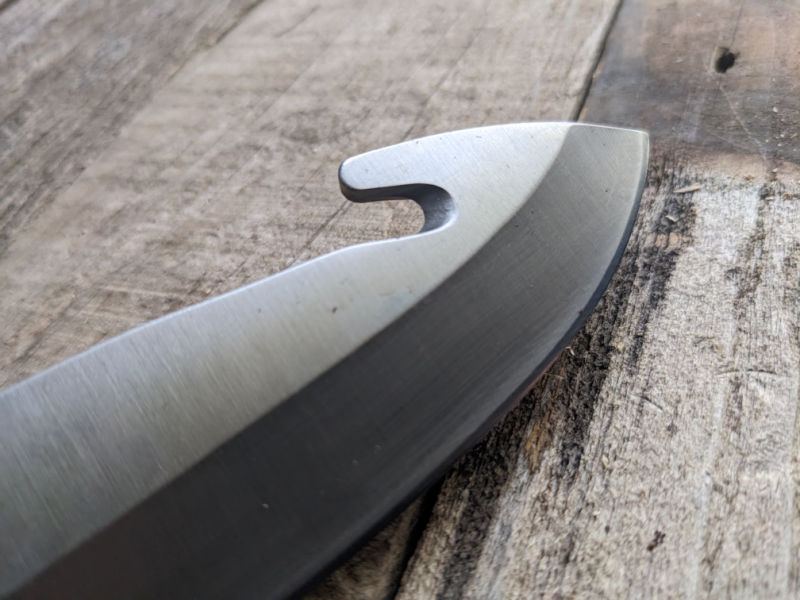
Blade Style:
Hunting knives typically feature a blade with either a drop point or clip point shape. These blade shapes offer versatility in various cutting tasks encountered during hunting activities.
The blade length of a hunting knife is usually longer compared to other types of knives. This length facilitates deep cuts and slicing through thick layers of flesh and hide.
The blade thickness of a hunting knife tends to be thinner compared to other types as well. This thinness allows for precise cuts and minimizes the risk of damaging valuable meat during field dressing or butchering.
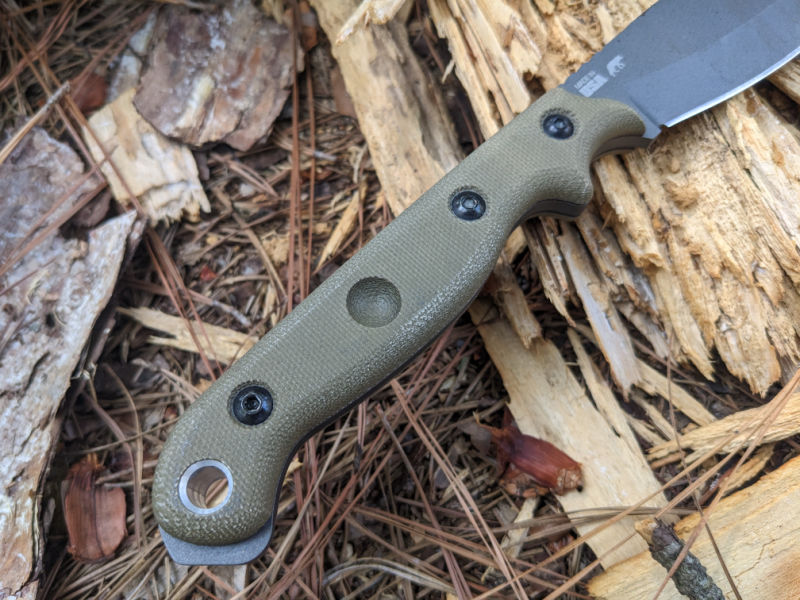
Handle Materials:
The handle design of a hunting knife prioritizes ergonomics to ensure a comfortable grip during extended use. This is especially important considering the often lengthy periods required for skinning and butchering large game animals.
In terms of material choices, durability and resistance to moisture or blood are key factors when selecting handles for hunting knives. Common materials include synthetic polymers like G10 or fiberglass reinforced nylon, as well as natural options such as wood or bone, which offer both aesthetic appeal and practicality in handling different weather conditions.
Additional Knife Features:
Some hunting knives may have additional components that enhance their utility in specific tasks. One such component is the gut hook, which aids in field dressing by allowing hunters to open an animal’s abdomen without puncturing internal organs. This feature streamlines the process while minimizing the risk of spoiling meat.
In addition, specific hunting knives may have a sawback spine as an optional feature. This serrated portion on the back of the blade assists in cutting through bones or tough materials that might be encountered during field dressing or other outdoor activities.
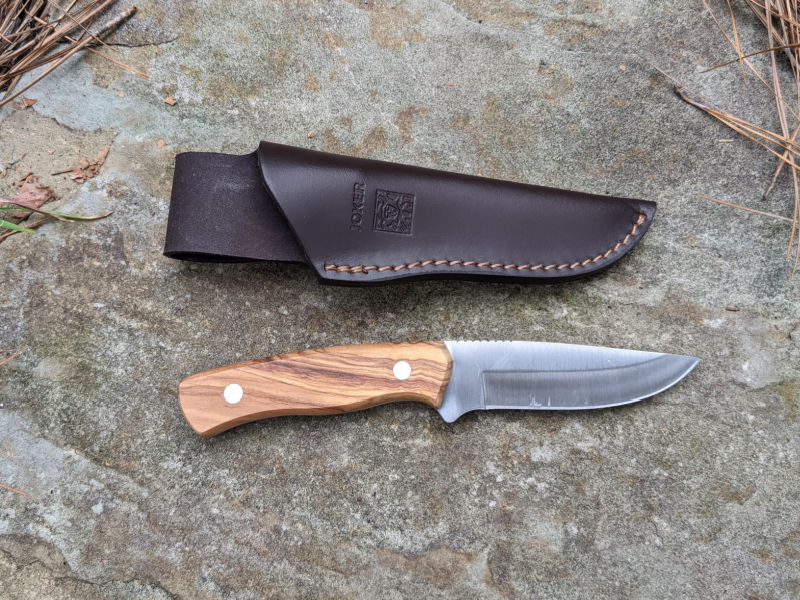
Bushcraft Knife
A bushcraft knife is a trusty companion for those venturing into the great outdoors, embracing the wild, and engaging in activities like wilderness survival, camping, or bushcraft. Unlike its hunting counterpart, the primary purpose of a bushcraft knife revolves around tasks such as wood processing, shelter building, and fire making. It’s designed to be a versatile tool that can handle various challenges encountered when spending time in nature’s embrace.
Blade Styles:
When it comes to blade characteristics, the bushcraft knife takes on some unique features that set it apart from other knives. The blade shape often follows a Scandinavian grind—a flat bevel that extends to the edge—allowing for easy maintenance in rugged environments.
In terms of length, a bushcraft knife tends to be shorter than a hunting knife as this allows for enhanced control during detailed tasks like carving or notching. Additionally, the blade thickness is usually thicker than its hunting counterpart to withstand heavy-duty chopping duties required for crafting makeshift tools or splitting firewood.
Handle Materials:
The handle of a bushcraft knife is carefully designed with ergonomics in mind to ensure comfortable use during various tasks. It provides an optimal grip that allows for precise control and reduces hand fatigue over extended periods of use.
Moreover, material choices are made with robustness against rough handling as a priority. Handles may be crafted from durable materials like micarta (resin-impregnated fabric), G-10 (fiberglass laminate), or natural materials such as wood or antler.
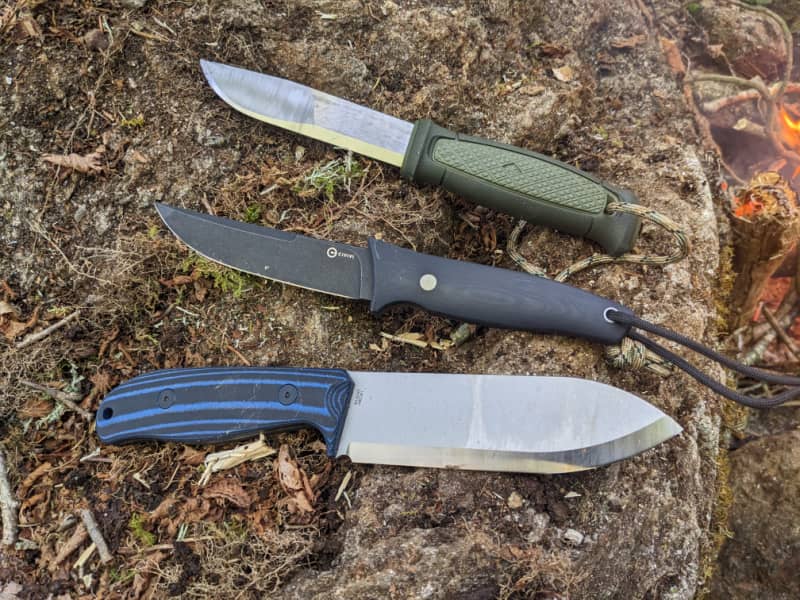
Additional Knife Features:
A notable feature found on many bushcraft knives is the inclusion of a firestarter notch on the spine of the blade. This minor groove serves as a specific spot to draw or strike a ferro rod. Some Bushcraft and survival knives also have a slight bowel or concave depression in the handle to act as a spot to hold a wood dowel or rod when using a bow drill for fire-starting.
It’s easy to see that both hunting knives and bushcraft knives have distinct purposes and characteristics. While a hunting knife excels at game-related tasks such as skinning and field dressing, the bushcraft knife shines in wood processing, shelter building, and fire making.
However, it needs to be noted that almost any knife can perform any essential cutting function, especially in an emergency. I would say that a Bushcraft knife will do a better job at processing the game than a hunting knife would at fine carving and wood crafting.
Each serves a unique role in enhancing one’s outdoor experience and ensuring preparedness for the varied challenges that nature presents. So whether you’re planning an adventurous camping trip or honing your bushcraft skills deep in the wilderness, choosing the right tool—the hunting knife or the bushcraft knife—will undoubtedly contribute to your success and enjoyment amidst nature’s grandeur.

Blair Witkowski is an avid watch nut, loves pocket knives and flashlights, and when he is not trying to be a good dad to his nine kids, you will find him running or posting pics on Instagram. Besides writing articles for Tech Writer EDC he is also the founder of Lowcountry Style & Living. In addition to writing, he is focused on improving his client’s websites for his other passion, Search Engine Optimization. His wife Jennifer and he live in coastal South Carolina.

